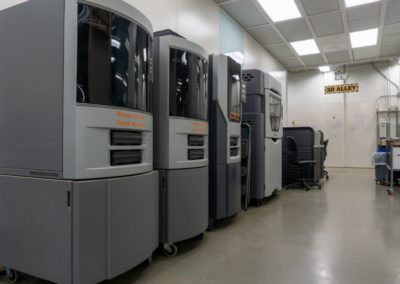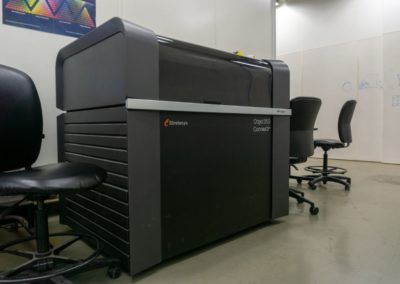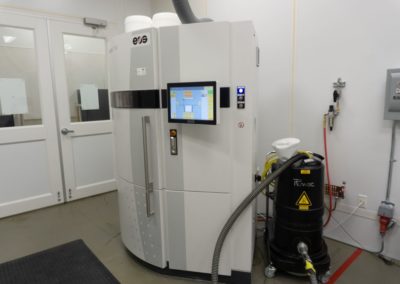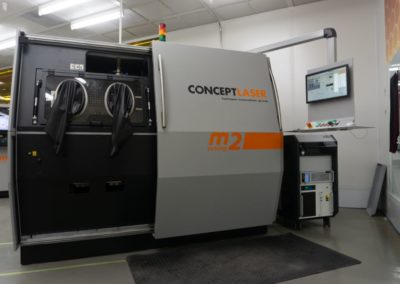Cost Center
Innovation Hub
Cost Center
Located in TECH 199 on the Polytechnic School campus the Innovation Hub is a 15,000 square foot research and education facility with specialized tools and technologies available to students, faculty, and university partners. Users of the space have access to machines and materials for performing university and industry research, and learning about many types of additive manufacturing processes. The Innovation Hub has recently become an official recharge center.
This means many exciting and unique additive manufacturing technologies previously reserved for faculty research, specialized school projects, and funded projects with industry partners will be available for use by the larger community for the first time. In addition to access to the machines for 3D printing the recharge center plans to provide engineering design support as well as provide education opportunities for both K-12 audiences and engineers who work in various industries and seek to learn about and leverage Additive Manufacturing.
Equipment
The 3D Printers at the Innovation Hub fall broadly under 4 types of Additive Manufacturing technologies: Fused Deposition Modeling (FDM), Polyjet (Material Jetting), Selective Laser Sintering (SLS), and Laser Powder Bed Fusion (LPBF). Each printer has its own strengths and weaknesses as well as unique capabilities.
Services
Services provided include counseling on printer technology selection, engineering support for build optimization, and consultation on how to optimize parts for additive manufacturing processes. Different printer technologies have different strengths and weakness so getting guidance on what printer is best suited to a specific application is an important choice on any project. Printer selection determines material choice, part tolerances, support choices, and more. Based on the project goals get detailed feedback about what the best printing technology for the application and what the print time and price points will be.
Build optimization can include many different aspects depending on a projects final application and the technology chosen. Get help with choosing part printing orientation, part placement within the build area, advice on nesting/packing multiple parts, and decisions on support structures. What makes a part easier to manufacture with 3D printing is different than what makes it easier to manufacture with more traditional methods. Get advice on how to optimize your part geometry for the best printing results where possible.
Place an Order
Potential customers can submit jobs by submitting an email request that includes their name, the desired printer and materials, a brief description of the parts, and any CAD files in the form of an .stl file to Sean Dengler the Engineer Associate for the Innovation Hub at [email protected]. Once a job is submitted a quote will be generated based on the estimated job print time and time required to pre and post process the parts. The cost to print per hour is determined by several factors including but not limited to what machine is used, material costs, machine time, labor, and consumables. The rates are based on the best available costs estimates but may change over time as new data becomes available.



